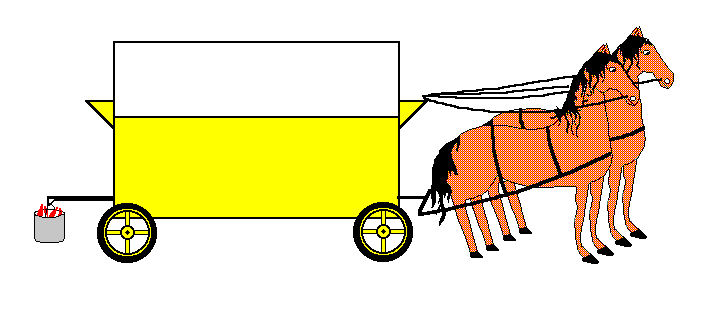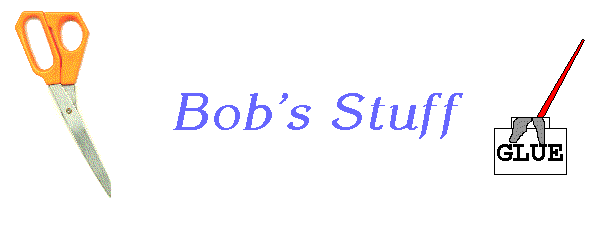52 Ancestors,
in 52 Weeks
Week 32:
In The City

In the City: Indianapolis
My father, Bob LaFara, lived most his life in the city of Indianapolis. He told many stories about his childhood, growing up in the east-side neighborhood of Irvington. I wrote about Irvington this year for the prompt “Favorite Place”. [1] My father created his own website back in the early 90’s called Bob’s Crafts, in addition to craft projects, he also shared a few of his stories. [2] This week I am sharing one of his stories about life in the city when he was a boy.
Bob’s Crafts
My father’s website is still online and we have resisted redesigning it for SEO. The stories were written with his grandson’s in mind and he refers to himself as “Grandpa”. This story is about the garbage collectors in his boyhood neighborhood during the mid-1930’s. These are my father’s original illustrations. [3]
THE GARBAGE TRUCK BALLET
by Bob LaFara
When grandpa was a boy, there was no television. But, grandpa found other interesting things to do. One of the things that he liked to do was watch the garbage men work.
“UGH!”, you say, “who wants to talk about garbage?“
It isn’t about garbage but how it was collected (there weren’t any garbage disposers in our kitchens, either.) Garbage (and on a different day, trash) was picked up by horse (or mule) drawn carts. These carts were called “gondolas.” They looked something like this picture. The color was more of a dirty orange.
They were specially built for this purpose and they were made of heavy steel. The body could be rolled sideways to dump the garbage. There were two covers that could be pulled down like window shades to cover the garbage when the gondola was full. An end view of a gondola looked something like this drawing.
There was a seat on each end for the crew. A two horse team could be harnessed to either end of the gondola to pull it. In cold weather, a large bucket was hung from the rear end and a fire was kept going in the bucket. The crew, a driver and a helper, could warm their hands over the fire. Both men worked picking up garbage and throwing it in the gondola. While they walked along beside the gondola, the driver would shout at the horses, “Giddyup” or “Whoa” to tell the horses when to start and stop. If there was a long distance between pickups (or there were corners to turn), the men rode on the gondola and the driver controlled the horses with the reins.
The men had to drive several miles to get to our neighborhood to start picking up garbage. It was also a long way to the dump to empty the gondola. Instead of taking the full gondola to the dump every time it was filled, there were several places where the crew could drop off a full gondola and pick up an empty one. One of those places was across the street in front of our house. While crews were picking up garbage, another man would bring out three empty gondolas which he pulled with a special truck.
He would unhook the truck and leave the empty gondolas there.
Now, this was the beginning of the fun part. I would sit on our front step and wait for the full gondolas to arrive. Pretty soon, two men riding on a full gondola (shades down) pulled by two horses would arrive. The driver would stop at the curb with a little distance between his horses and the end empty gondola.
The driver would unhitch the team from the full gondola. He did this by removing the entire tongue of the gondola which was attached to a draw bar and the horse’s harness. He then turned the horses around and backed them up to the empty gondola.
In a little while, a different crew would arrive and go through the same procedure of leaving a full gondola and taking an empty one. Later, a third crew would arrive and exchange with the last empty gondola. The truck driver would come later. He would hook his truck to the first full gondola, then back it into another one so he could connect it, and finally into the third one. When they were all connected together, he would tow the whole train to the dump to empty the gondolas.
On another day of the week I could watch the whole thing again when they were picking up trash. We had to set out our garbage and trash on different days. In those days, we set out large buckets of ashes from our coal fires. The men had to be very strong to lift those heavy tubs up to dump them in a gondola.
Conclusion
I hope you enjoyed this story written by my father about life in the city of Indianapolis during the 1930’s. He would enjoy knowing I shared it. Read more of his stories, or try his craft projects, on his website, Bob’s Crafts. [4] I have previously written about my father for this year’s prompts “Air” and “Father”. [5, 6]
EPILOGUE
While writing this, I thought of a documentary I watched a few years ago. The title is “Trash Dance” and it’s about a choreographer who persuades sanitation workers to perform a “dance” with their trucks. It’s worth a watch, 100% Rotten Tomatoes. Find it for free with ads on Vudu.
SOURCES
- Blog post, Family Finds: Favorite Place; https://barblafara.com/favorite-place/
- Webpage, Bob’s Crafts: Stories; https://bobscrafts.com/category/stories/
- Webpage, Bob’s Crafts: The Garbage Truck Ballet; https://bobscrafts.com/the-garbage-truck-ballet/
- Website, Bob’s Crafts; https://bobscrafts.com/
- Blog post, Family Finds: Air; https://barblafara.com/air/
- Blog post, Family Finds: Father; https://barblafara.com/father/
2 Comments
Submit a Comment












I thoroughly enjoyed your post on your father’s experience with garbage collectors. My little great-nephew just loves garbage trucks and if he was a bit older I could share this with him. Interestingly I just bought him a couple books on garbage collectors and then I see your post.
Thanks Cheryl! My father enjoyed writing these stories and I plan to share others in the future.